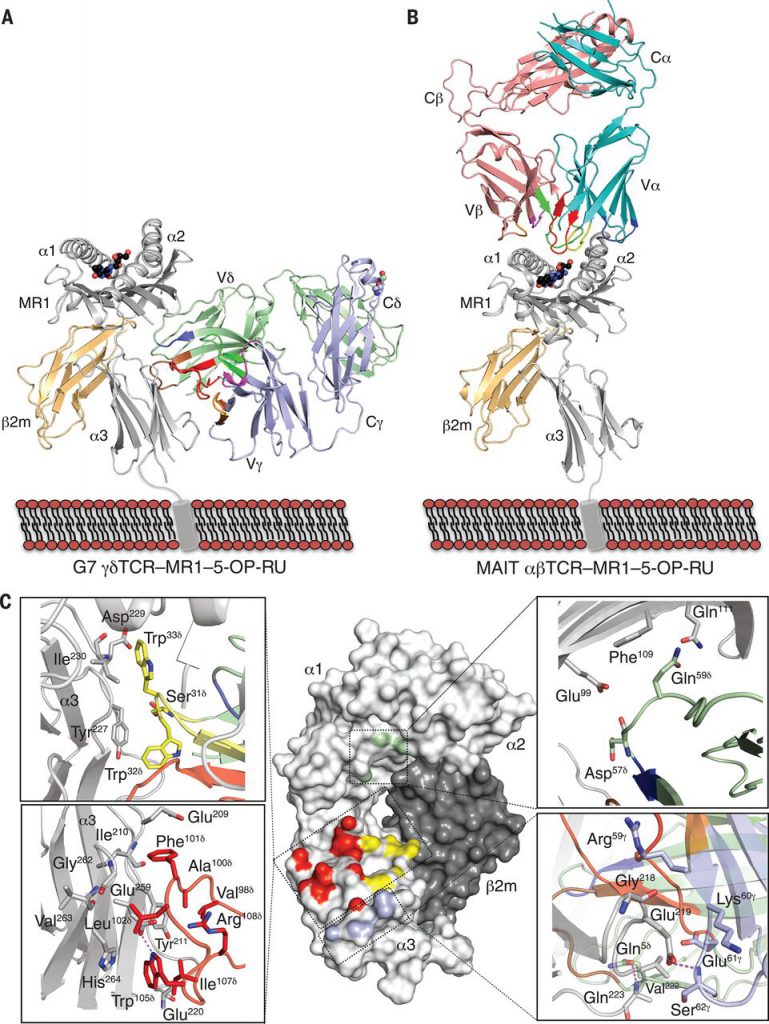T cells are a key component of our immune system and play a key role in protecting us from harmful pathogens such as viruses and bacteria, as well as cancer. The more we know about how they recognize, act on, or even kill infected cells or cancer cells, the closer we can get to developing drugs and treatments for various diseases.
In a new study, researchers from Monash University in Australia, the Australian Research Council Centre of Excellence in Advanced Molecular Imaging, and the University of Melbourne Doherty Institute have redefined our understanding of T cell recognition over the past 20 years. The relevant findings were recently published in the journal Science under the title “A class of γδT cell receptors recognize the underside of the antigen-presenting molecule MR1”.

To interact with other cells in the body, T cells rely on specialized receptors called T cell receptors that recognize viral or bacterial fragments bound to specialized molecules called major histocompatibility complex (MHC) or MHC-like molecules. Over the past 20 years, it has been widely believed that T cell receptors bind to MHC and MHC-like molecules for recognition.
In this new study, these researchers describe a population of cells in a little-known class of T cells called γδ T cells that are able to recognize an MHC-like molecule called MR1. By using a high-intensity X-ray beam at an Australian synchrotron, they obtained a detailed three-dimensional image of the interaction between the γδ T cell receptor and MR1 and obtained interesting results: the γδ T cell receptor binds underneath MHC-like molecules for recognition. This highly unusual recognition mechanism has reshaped our understanding of how T cell receptors interact with their target molecules and represents a major development made in the field of T cell biology.
Co-first author of the paper, Jérôme Le Nours, of the Institute of Biomedical Discovery at Monash University, said, “We think of it as a sign attached to cells. We always thought T cells would come over and read this sign. We have identified that some T cells can approach and interact with it from below. These are important details that can change our future research methods of T cell biology. This is important because T cells are a key weapon of our immune system and understanding how T cells target and act on other cells is critical to harnessing their power to develop immunotherapies that treat diseases such as infections and cancer.
“Our research shows that MR1 is a novel molecular target for γδT cells. These cells play a decisive role in the immune response against infection and cancer,” said co-first author Dr. Nicholas Gherardin of the Doherty Institute at the University of Melbourne. But little is known about how they respond. MR1 may signal γδT cells to indicate the presence of viruses or cancer cells and trigger these cells to trigger a protective immune response. ”
Reference
1.Jér?me Le Nours et al. A class of γδ T cell receptors recognize the underside of the antigen-presenting molecule MR1. Science, 2019, doi:10.1126/science.aav3900.
2.Advanced imaging tips T cell target recognition on its head
https://medicalxpress.com/news/2019-12-advanced-imaging-cell-recognition.html